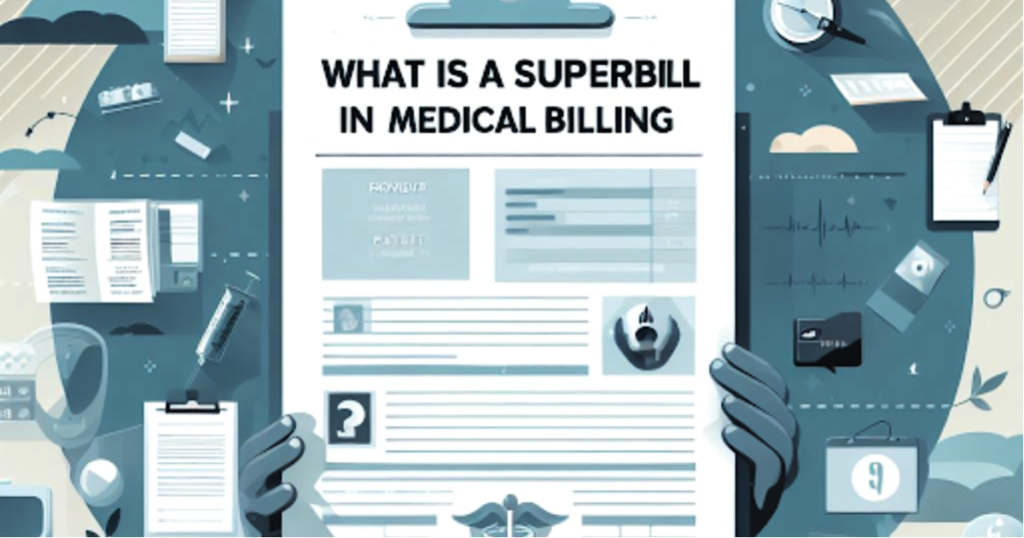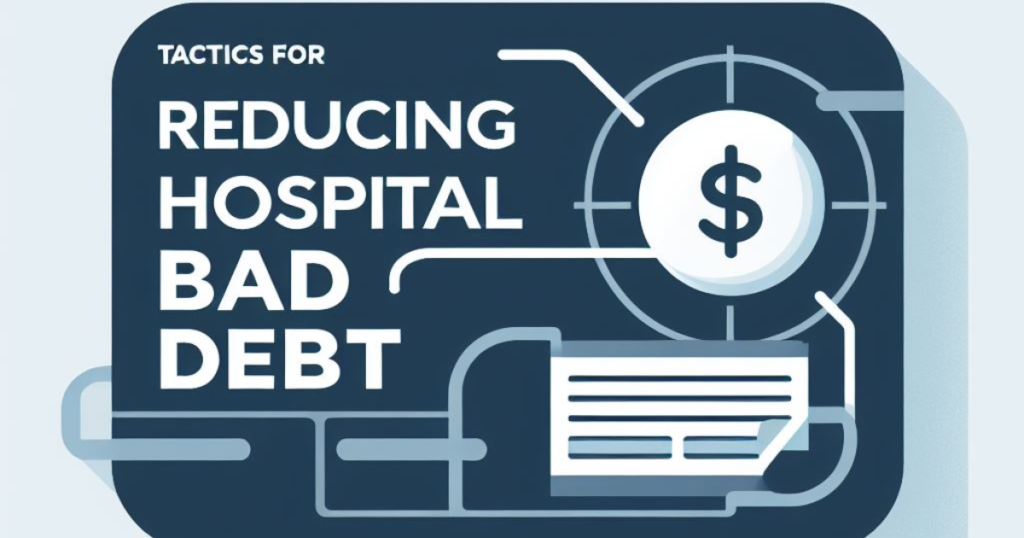
A superbill is a critical component of medical billing that serves as an itemized list of services provided to a patient. It is primarily used by healthcare providers to create claims for reimbursement from insurance payers. Understanding what a superbill is and how it works is essential for both providers and patients. In this comprehensive guide, we will explore the purpose and components of a superbill, discuss how it is used in medical offices, and provide insights on creating and submitting superbill claims.
1. What is a Superbill?
A superbill is a document used by healthcare providers to record and itemize the services rendered to a patient during a visit. It serves as a primary source of data for creating claims that will be submitted to insurance payers for reimbursement. Think of it as an itemized receipt that contains essential information such as procedure codes, diagnosis codes, and other details required by insurance companies.
The term “superbill” may also be known by other names, including “charge slips,” “encounter forms,” or “fee tickets.” Regardless of the name, the purpose remains the same: to capture the necessary information to bill insurance companies accurately.
2. Components of a Superbill
A superbill consists of three main components: provider information, patient information, and visit information.
Provider Information
The provider information section includes relevant details about the healthcare practice submitting the claim. This information typically includes the provider’s name, National Provider Identifier (NPI) number, office location, phone number, email address, and signature. If applicable, the name and NPI number of the referring provider may also be included.
Patient Information
The patient information section contains essential details about the patient, necessary for submitting an insurance claim. This information typically includes the patient’s name, address, phone number, date of birth, and insurance information.
Visit Information
The visit information section of a superbill is crucial for successful claim submission. It includes specific details about the visit, such as the date of the visit, procedure codes (CPT), diagnosis codes (ICD-10), modifiers, units or minutes, and fees charged. Procedure codes describe the medical procedures performed by the provider, while diagnosis codes classify the patient’s symptoms or conditions. Modifiers indicate any special circumstances related to the services provided.
3. The Purpose of a Superbill in a Medical Office
The primary purpose of a superbill in a medical office is to serve as the primary data source for constructing a healthcare claim. Insurance companies require specific information to calculate reimbursement against a healthcare service. A superbill contains all the necessary information, including procedure codes, diagnosis codes, and other relevant data, to facilitate accurate claim submission. It ensures that healthcare providers can communicate the services provided to the office staff and, in turn, to the payer.
4. Creating a Superbill
Creating a superbill can be done manually or with the help of electronic health record (EHR) software. If using an EHR system, providers can generate superbill templates automatically. However, if an EHR system is not available, providers can create their own superbill templates to ensure accurate record-keeping and claim submission.
A comprehensive superbill template should include patient identification information such as name, date of birth, address, and phone number. Additionally, it should capture provider information, including the provider’s name, NPI number, office location, and contact details. The template should also have sections to record the date of service, procedure codes (CPT), diagnosis codes (ICD-10), modifiers, units or minutes, and fees charged.
5. Submitting Superbill Claims
Submitting superbill claims to insurance payers can vary depending on the insurer’s requirements. Some insurance companies may have online portals where providers can upload the superbill and any accompanying documents, such as an explanation of benefits (EOB). Others may prefer faxed or mailed submissions.
Before submitting a superbill, it is essential to review the insurer’s submission instructions and ensure that all required information is included and accurate. This includes verifying patient and provider information, double-checking the correctness of procedure codes, diagnosis codes, and any modifiers used. Attention to detail can help avoid claim denials and delays in reimbursement.
6. Superbill vs. Receipts and Invoices
A superbill differs from a typical receipt or invoice in several ways. While receipts and invoices mainly serve as proof of payment, superbill incorporates additional information necessary for insurance claims. Superbills include procedure codes (CPT), diagnosis codes (ICD-10), and other relevant data, which insurance companies require to process claims accurately.
Unlike receipts or invoices, which are issued after payment, superbill documentation is generated before payment. It serves as a record of the services provided during a patient visit and helps facilitate the reimbursement process.
7. Common Terminology and Misconceptions
Misunderstandings and misconceptions surrounding superbills are common. One common misconception is that superbills are actual bills. In reality, superbills are itemized lists of services provided, not billing statements. They are used to create claims for reimbursement.
Another misconception is that superbills are only used for out-of-network providers. While superbills are commonly associated with out-of-network billing, they can also be used by in-network providers. In-network providers may use superbills to document services that are not covered by insurance or require additional documentation for reimbursement.
8. Benefits of Using Superbills
Using superbills offers several benefits for both healthcare providers and patients. For providers, superbills provide a comprehensive record of services provided, which can aid in accurate billing and documentation. Superbills also streamline the claim submission process, making it easier to communicate with insurance payers and receive reimbursement.
For patients, superbills serve as detailed records of services rendered, making it easier to understand and track their healthcare expenses. Superbills also provide the necessary information for patients to submit claims to their insurance for reimbursement.
9. Superbill Best Practices
To optimize the use of superbills, it is essential to follow best practices. These include ensuring the accuracy of all information recorded on the superbill, double-checking procedure and diagnosis codes for correctness, and promptly submitting superbill claims to insurance payers.
Providers should also educate their staff on the importance of thorough documentation and accurate coding to avoid claim denials. Regular training and updates on coding changes can help maintain compliance and maximize reimbursement.
10. Conclusion
Understanding what a superbill is and how it works is crucial for healthcare providers and patients alike. Superbills serve as a vital tool in medical billing, providing an itemized record of services rendered and facilitating the reimbursement process. By accurately documenting procedure codes, diagnosis codes, and other relevant information, superbills ensure accurate claim submission and maximize reimbursement for healthcare providers and patients.
In conclusion, superbill utilization plays a significant role in streamlining the medical billing process, enhancing communication between providers and insurance payers, and improving the overall patient experience. By implementing best practices and understanding the purpose and components of a superbill, healthcare providers can optimize their billing procedures and ensure efficient reimbursement.
FAQs
What is the primary purpose of a superbill?
A superbill serves as an itemized document that records the medical services provided to a patient during a visit. It is used by healthcare providers to create claims for insurance reimbursement.
What information is included in a superbill?
A superbill typically includes provider details (e.g., name, NPI number, and contact information), patient details (e.g., name, date of birth, and insurance information), and visit details such as procedure codes (CPT), diagnosis codes (ICD-10), modifiers, and fees charged.A superbill typically includes provider details (e.g., name, NPI number, and contact information), patient details (e.g., name, date of birth, and insurance information), and visit details such as procedure codes (CPT), diagnosis codes (ICD-10), modifiers, and fees charged.
Can patients use superbills for reimbursement from their insurance?
Yes, patients can submit superbills to their insurance companies to claim reimbursement, especially if the provider is out-of-network. The superbill includes all the necessary details required by insurers for processing claims.
Are superbills only used by out-of-network providers?
No, while superbills are often associated with out-of-network billing, in-network providers can also use them for documenting services not covered by insurance or for additional documentation required for specific reimbursements.
How can healthcare providers ensure accuracy in superbills?
Providers can ensure accuracy by double-checking all recorded information, including patient and provider details, procedure codes, diagnosis codes, and Regular staff training and updates on coding changes can further help maintain accuracy and compliance.





